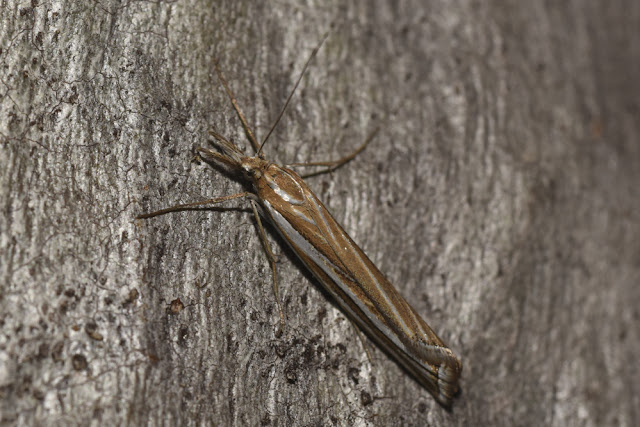
Emperor Gum Moth Opodiphthera eucalypti (c 15 cm wingspan)
I was out at Tidbinbilla Nature Reserve last week helping with a moth survey organised by Glenn Cocking and Suzi Bond for their book on moths of the Australian Capital Territory. The site was well sheltered beneath tall eucalypt trees and I managed to photograph about a dozen species. Here is a small selection of the ones I photographed. It is the colours and form that appeal to me. Knowledge of these species is so sparse that I cannot fill out the text to tell more about them, especially their lifestyles, habitats and foodplants. Hopefully that will all be in the book.

Melanodes anthracitaria dark phase (c 5 cm wingspan)
This rather ordinary moth is worth a mention because it occurs in two colour forms; a dark all grey phase, and light phase of grey blotched with creamy/yellow.
Melanodes anthracitaria light phase

Hypobapta sp. from above (c 4 cm wingspan)
I like to see the moths' tiny faces, antennae and those big round eyes.

Hypobapta sp. from the side/front

Praxis porphyretica (c 4 cm wingspan)

Callitera rotundrata (c 4 cm wingspan)

Cleora sp. (c 4 cm wingspan)
What wonderful antennae.
Nisista sp. (c 4 cm wingspan)
This species looks so much like a rolled-edged leaf lying on the forest litter.

Endotricha ignealis (c 2 cm wingspan)
This species seems deliberately to hold its forequarters up on its long legs, and its great long antennae are swept over its back.

Endotricha ignealis

Parepisparis lutosaria (c 7 cm wingspan)
Finally, this was my favourite find of the night, magnificent colour and form.









































